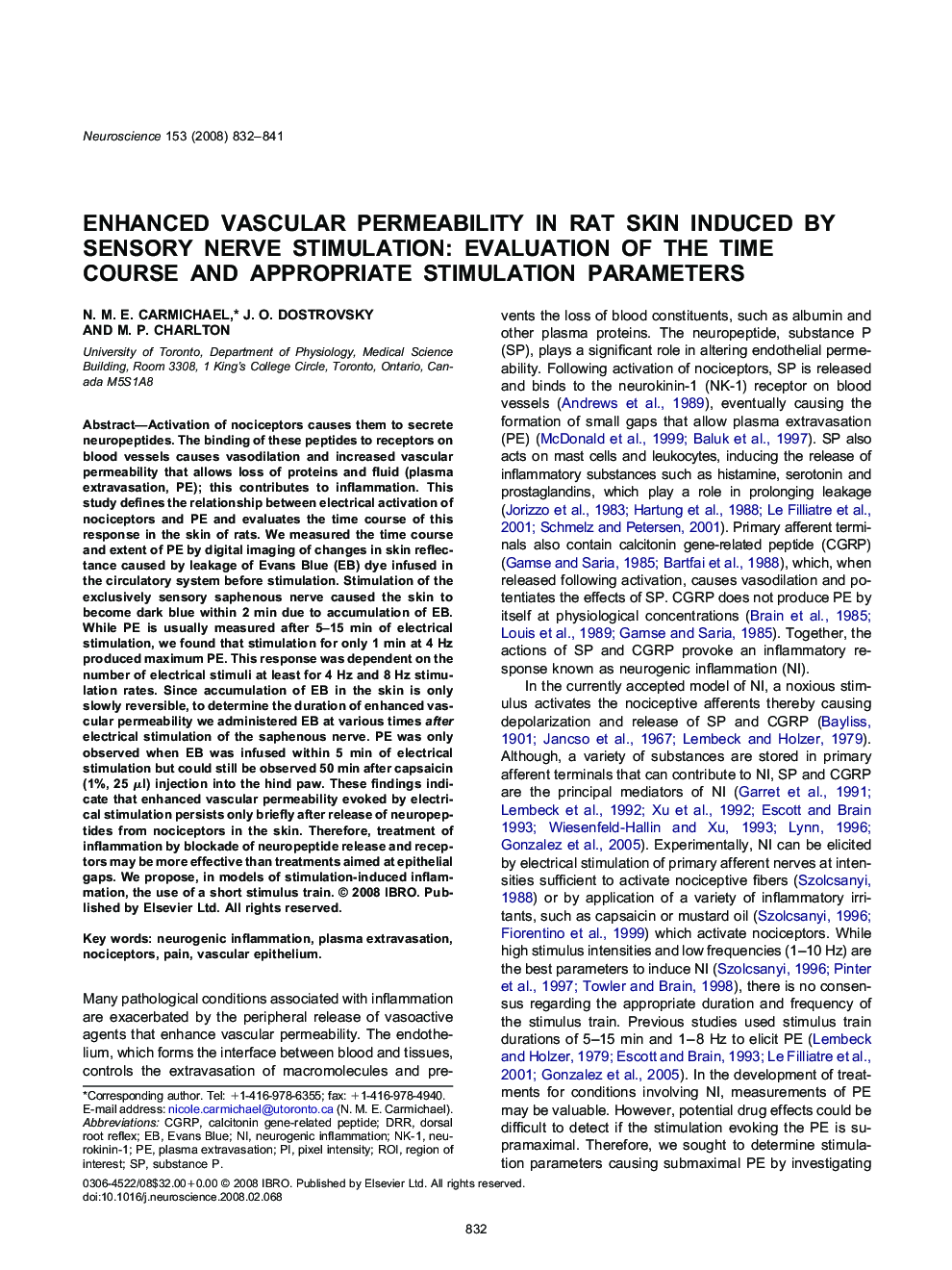| Article ID | Journal | Published Year | Pages | File Type |
|---|---|---|---|---|
| 4341999 | Neuroscience | 2008 | 10 Pages |
Activation of nociceptors causes them to secrete neuropeptides. The binding of these peptides to receptors on blood vessels causes vasodilation and increased vascular permeability that allows loss of proteins and fluid (plasma extravasation, PE); this contributes to inflammation. This study defines the relationship between electrical activation of nociceptors and PE and evaluates the time course of this response in the skin of rats. We measured the time course and extent of PE by digital imaging of changes in skin reflectance caused by leakage of Evans Blue (EB) dye infused in the circulatory system before stimulation. Stimulation of the exclusively sensory saphenous nerve caused the skin to become dark blue within 2 min due to accumulation of EB. While PE is usually measured after 5–15 min of electrical stimulation, we found that stimulation for only 1 min at 4 Hz produced maximum PE. This response was dependent on the number of electrical stimuli at least for 4 Hz and 8 Hz stimulation rates. Since accumulation of EB in the skin is only slowly reversible, to determine the duration of enhanced vascular permeability we administered EB at various times after electrical stimulation of the saphenous nerve. PE was only observed when EB was infused within 5 min of electrical stimulation but could still be observed 50 min after capsaicin (1%, 25 μl) injection into the hind paw. These findings indicate that enhanced vascular permeability evoked by electrical stimulation persists only briefly after release of neuropeptides from nociceptors in the skin. Therefore, treatment of inflammation by blockade of neuropeptide release and receptors may be more effective than treatments aimed at epithelial gaps. We propose, in models of stimulation-induced inflammation, the use of a short stimulus train.
